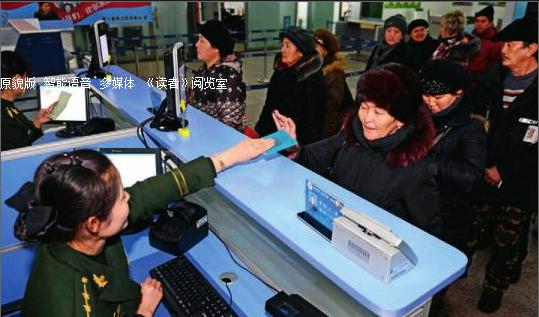Xinjiang Opens Wider to Western Neighbors
By+CHEN+ZHUO+&+HE+JINHONG


LAST year a new flight route connecting Islamabad, Pakistan and Kashgar, Xinjiang opened, marking one move the Uygur Autonomous Region has undertaken to galvanize development on Chinas western frontier. Other expansion measures include the second railway between the region and neighboring Kazakhstan and the electric conversion program of the Lanzhou-Xinjiang Railway.
These efforts all aim to strengthen Xinjiangs function as a gateway to the West, bringing Chinas western region closer to its neighbors.
The general merits of Kashgars location have long been lauded: Its five ports connect eight countries, while its land routes link Europe and Asia. But for years, the natural conditions on the ground have adversely influenced land transport between Kashgar and Pakistan, hindering economic and trade relations between the two sides.
“With the opening of the the new air route, a direct flight from Kashgar to Islamabad will take only 50 minutes. This will dramatically increase the ease with which both sides conduct trade and economic exchanges,” Wang Yongzhi, deputy commissioner of Kashgars Administrative Office, said. Together with renewed efforts to support Xinjiang, further opening up Kashgar will bring more business opportunities for people both domestically and overseas.
For the past two years, Khorgos, a region of 73 square kilometers on the western boundary of China with Central Asia, has become a honeypot attracting swarms of visitors – entrepreneurs, scholars, officials and journalists – all bringing new investment opportunities and spreading the word of its growth potential across China and the world.
Since December 2012, freight trains have been operating out of Khorgos Port, the second rail route linking China with Kazakhstan. The first one runs through the Alataw Pass Port along the New Eurasian Land Bridge.
In January, Che Tanlai, a researcher at the Economic Planning Institute of the Ministry of Railways, remarked in an interview, “With the launch of this rail line, the Khorgos Port has become an international transportation hub covering railways, roads and pipelines between China, Central Asia and Europe. It puts Xinjiang in a vital position in Chinas westward development.”
Meanwhile, the electric conversion of the railway between Lanzhou of Gansu Province and Xinjiang, which is part of the New Eurasian Land Bridge, allows the frontier region better access to inland provinces to its east and Central Asian countries to its west. According to Chinas 12th Five-year Plan for Railways, the infrastructure of the Lanzhou-Lianyungang and LanzhouXinjiang railways, two main routes of the New Eurasian Land Bridge, will be improved with separate lines for passengers and freight, all electric and with expanded capabilities. In addition to these arteries, more supporting lines are also under construction, such as one between Hami in eastern Xinjiang and Linhe in Inner Mongolia and one linking Lanzhou of Gansu Province with Chongqing City.


In 2011, the Trans-Eurasia Railway went into operation. Connecting Chongqing in southeastern China to Duisburg, Germany, the route traverses Shaanxi, Gansu and Xinjiang before entering Kazakhstan, Russia, Belarus and Poland. The benefits to Chongqing in terms of its infrastructure development, not to mention the wider economic benefits to China, have been significant. Following Chongqings lead, other cities in China are planning to open transport channels for products of high added value between China and Europe.
“This is a new trend in the development of the New Eurasian Land Bridge, attracting increasing attention from rail and logistics operators in China and some European countries,” said Che Tanlai.
But the question of how to take full advantage of this boost to Kashgar and Khorgos growth should be considered.
“First, we need to closely observe what our neighboring countries need and then position Xinjiang appropriately,” commented Turgunjan Tursun, a research fellow at the Xinjiang Academy of Social Sciences. He went on to explain that Kashgar could further develop its processing industry to improve employment opportunities and increase local incomes. He also suggested that Khorgos become proactive in attracting industries from further east by promoting its position as a channel and port to the West.
Sitting in the heart of the Asian Continent, Urumqi, capital of Xinjiang, is also jumping on the bandwagon to open more flight routes connecting Asia and Europe.
According to Zhang Jun, marketing manager of China Southern Airlines Xinjiang Branch, his company plans to increase flights from Xinjiang to Central and Western Asian countries and open up new flight routes to Budapest, Prague and Kiev over the coming years.
So far, there are 37 international flight routes covering 13 countries and 22 international cities accessed by Urumqi International Airport, which is Chinas fourth largest international aviation hub after Beijing, Shanghai and Guangzhou.
Now, Xinjiangs “aortic” role in the opening-up and development of Chinas western region has taken on a new, vital significance. The regions geographical advantages are bound to add wings to its economic progress, speeding up the construction of a modern Silk Road.

